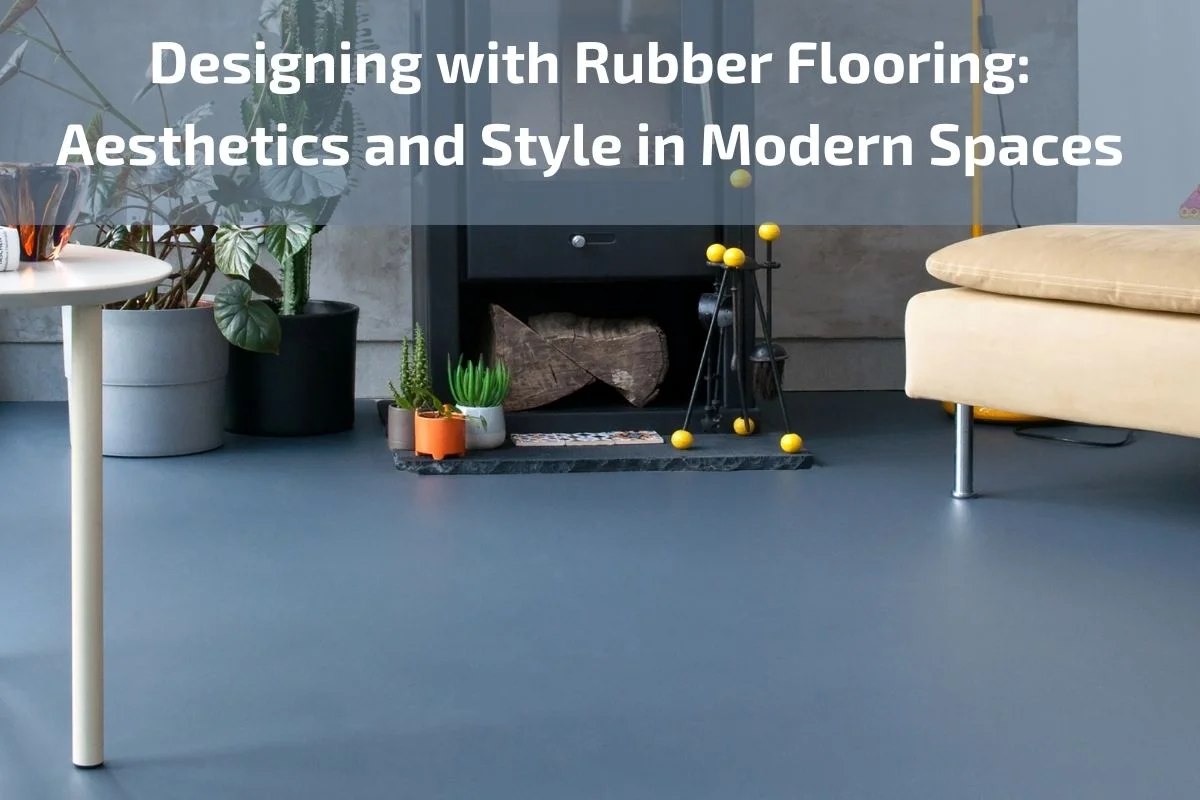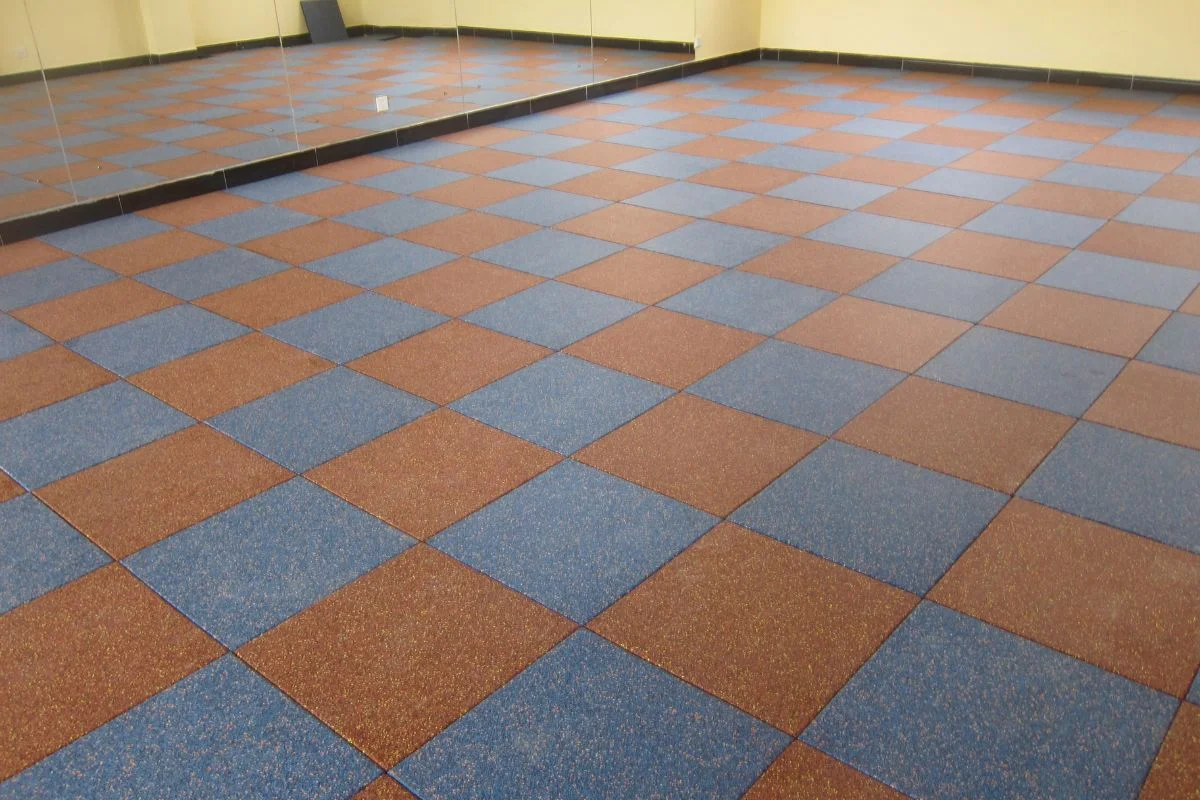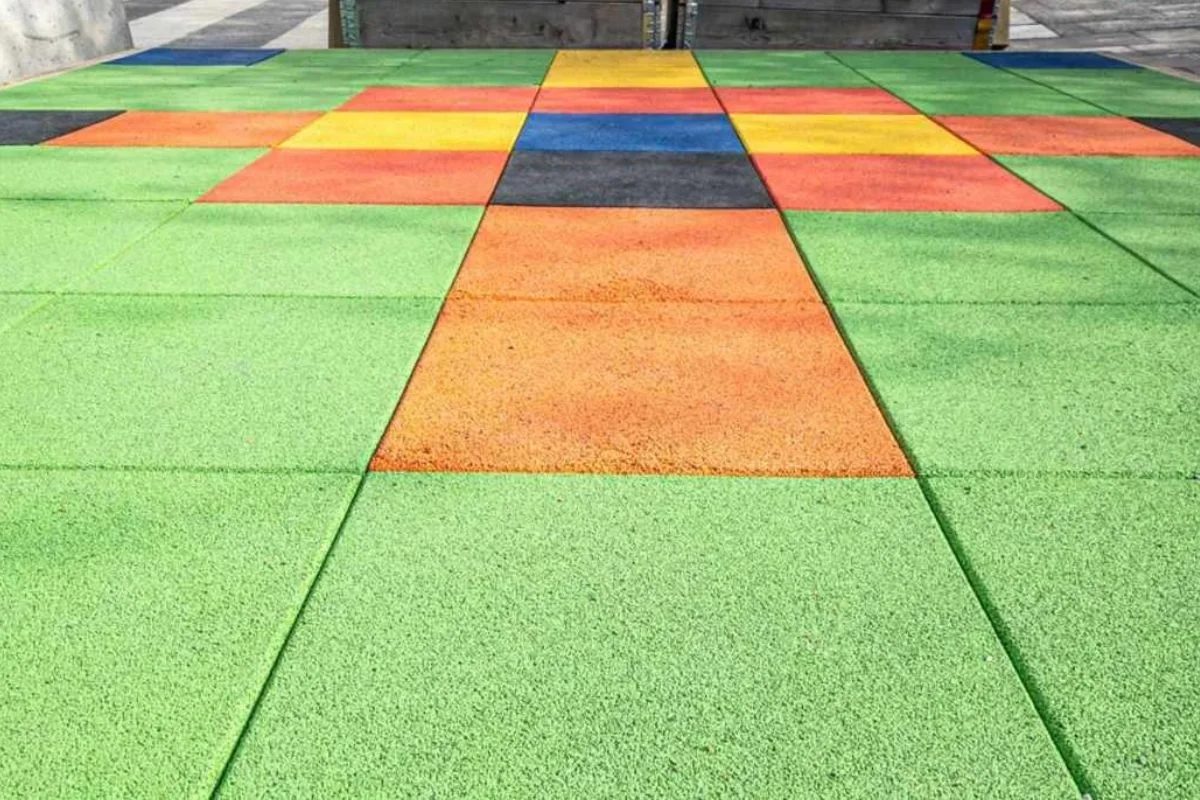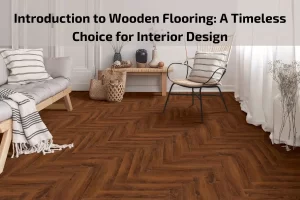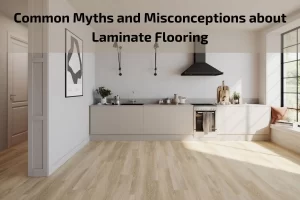In the world of interior design, flooring serves as the foundation upon which the entire aesthetic narrative of a space is built. It’s not just about functionality anymore; it’s about creating an ambiance, reflecting a brand, and evoking a feeling. In this pursuit of style and substance, rubber flooring has emerged as a versatile and contemporary option that architects, designers, and homeowners are increasingly turning to.
Gone are the days when rubber flooring was confined to industrial settings or gymnasiums. Today, it has transcended its utilitarian roots to become a hallmark of modern design, adorning spaces ranging from sleek office buildings to trendy residential lofts. The marriage of form and function has never been more evident than in the realm of rubber flooring, where practicality meets design innovation with striking results.
Importance of RUBBER Flooring in Interior Design
Rubber flooring has emerged as a crucial element in interior design, revolutionizing traditional notions of flooring aesthetics and functionality. Its importance stems from a myriad of factors that cater to the diverse needs of modern spaces while enhancing their overall appeal and sustainability. Here’s why rubber flooring holds significant importance in interior design:
Durability and Longevity: One of the primary reasons for the prominence of rubber flooring in interior design is its exceptional durability and longevity. Unlike many other flooring materials, rubber can withstand heavy foot traffic, high impact, and wear and tear without losing its structural integrity. This durability ensures that spaces maintain their aesthetic appeal over an extended period, making rubber flooring a cost-effective choice for both residential and commercial environments.
Safety and Comfort: Rubber flooring offers inherent safety features that make it ideal for a variety of settings, including homes, schools, healthcare facilities, and gyms. Its slip-resistant surface provides stability and reduces the risk of accidents, particularly in areas prone to spills or moisture. Additionally, the cushioning properties of rubber enhance comfort underfoot, making it an ergonomic choice for spaces where people spend extended periods standing or walking.
Versatility in Design: Another compelling aspect of rubber flooring is its versatility in design. Available in a wide array of colors, textures, and patterns, rubber flooring allows designers to unleash their creativity and tailor flooring solutions to match specific aesthetic preferences and interior themes. Whether aiming for a sleek, contemporary look or a playful, vibrant atmosphere, rubber flooring offers endless design possibilities to suit diverse stylistic preferences.
Sustainability and Environmental Friendliness: In an era marked by growing environmental consciousness, the sustainability of building materials has become a key consideration in interior design. Rubber flooring stands out as an environmentally friendly option due to its use of recycled materials and low environmental impact during production. Additionally, its long lifespan reduces the need for frequent replacements, minimizing waste and contributing to sustainable building practices.
Sound Absorption and Acoustic Performance: Rubber flooring exhibits excellent sound absorption properties, making it an effective solution for noise reduction in various settings. In spaces such as offices, educational institutions, and multi-family residences, rubber flooring helps mitigate noise transmission between floors and rooms, creating quieter and more comfortable environments conducive to productivity, learning, and relaxation.
Benefits of Rubber Flooring
Durability and Longevity:
- Withstands Heavy Foot Traffic: Rubber flooring is exceptionally durable and can withstand high volumes of foot traffic without showing signs of wear and tear.
- Resistant to Damage: It is highly resistant to scratches, stains, and dents, making it ideal for areas prone to heavy use and abuse.
- Long Lifespan: Rubber flooring has a long lifespan compared to many other flooring materials, reducing the need for frequent replacements and associated costs.
Safety Features:
Slip-Resistant Surface: The inherent slip-resistant properties of rubber flooring provide enhanced traction, reducing the risk of slips and falls in both dry and wet conditions.
Shock Absorption: Rubber flooring offers excellent shock absorption, minimizing the impact of accidental falls and reducing the risk of injury, particularly in high-traffic areas and spaces frequented by children or the elderly.
Fire Resistance: Many rubber flooring products are inherently fire-resistant, meeting stringent safety standards and providing added peace of mind in case of fire emergencies.
Versatility in Applications:
Suitable for Various Environments: Rubber flooring is suitable for a wide range of environments, including commercial, residential, educational, healthcare, and recreational spaces.
Indoor and Outdoor Use: It can be installed indoors or outdoors, making it a versatile option for a variety of applications, from gymnasiums and playgrounds to retail stores and office buildings.
Compatibility with Underfloor Heating: Certain types of rubber flooring are compatible with underfloor heating systems, offering warmth and comfort in colder climates without compromising performance.
Eco-Friendly Attributes:
Made from Recycled Materials: Many rubber flooring products are manufactured using recycled rubber, such as reclaimed tires, contributing to waste reduction and environmental sustainability.
Low Environmental Impact: Rubber flooring production processes typically have a lower environmental impact compared to the manufacturing of some other flooring materials, such as vinyl or carpet.
Recyclability: Rubber flooring is often recyclable at the end of its lifespan, further reducing its environmental footprint and promoting a circular economy.
Designing with Rubber Flooring
Aesthetics and Style Trends:
Color Options and Palettes: a. Vibrant and Bold Colors: Rubber flooring is available in a wide spectrum of vibrant colors, ranging from bold primaries to subtle neutrals, allowing designers to create visually striking interiors. b. Customization Options: Many manufacturers offer customizable color options, enabling designers to tailor rubber flooring to match specific design palettes and branding requirements.
Patterns and Textures: a. Modern Patterns: Contemporary rubber flooring designs often feature sleek geometric patterns, abstract motifs, and dynamic textures, adding visual interest and depth to interior spaces. b. Wood and Stone Effects: Some rubber flooring products mimic the look and texture of natural materials like wood and stone, providing the aesthetic appeal of traditional flooring options with the durability and practicality of rubber.
Integration with Various Design Themes: a. Minimalist Chic: Rubber flooring complements minimalist design themes with its clean lines, smooth surfaces, and understated color palettes, creating a sleek and contemporary aesthetic. b. Industrial Charm: In industrial-style interiors, rubber flooring adds an urban edge with its raw, utilitarian look and industrial-inspired textures, contributing to the overall rugged aesthetic of the space.
Case Studies and Examples of Innovative Designs:
Commercial Spaces: a. Retail Stores: Rubber flooring in retail environments provides a durable and attractive flooring solution that can withstand heavy foot traffic while enhancing the overall shopping experience. b. Hospitality Venues: Hotels and restaurants often incorporate rubber flooring in high-traffic areas such as lobbies, corridors, and dining spaces, combining style and functionality to create inviting and comfortable spaces for guests.
Residential Areas: a. Modern Homes: In contemporary residential interiors, rubber flooring offers a sleek and stylish alternative to traditional flooring materials, providing durability and ease of maintenance in high-traffic areas like kitchens, bathrooms, and entryways. b. Children’s Playrooms: Rubber flooring is a popular choice for children’s playrooms and recreational areas due to its soft, cushioned surface, shock absorption properties, and vibrant color options, creating a safe and inviting environment for play and creativity.
Recreational and Fitness Facilities: a. Gyms and Fitness Centers: Rubber flooring is the flooring material of choice for gyms and fitness centers, offering superior shock absorption, slip resistance, and durability to withstand the rigors of heavy exercise equipment and high-impact workouts. b. Sports Courts: Rubber flooring is commonly used in indoor sports courts and recreational facilities for its excellent traction, ball bounce, and impact absorption properties, ensuring optimal performance and safety for athletes and players.
Sustainability and Environmental Impact Rubber Flooring
Use of Recycled Materials:
Reclaimed Rubber: Many rubber flooring products are manufactured using recycled materials, such as reclaimed rubber from discarded tires and other rubber products, diverting waste from landfills and contributing to resource conservation.
Eco-Friendly Production Processes: Manufacturers employ eco-friendly production techniques that minimize energy consumption, water usage, and emissions, reducing the environmental footprint of rubber flooring production.
Low Environmental Impact:
Reduced Carbon Footprint: Rubber flooring production typically has a lower carbon footprint compared to the manufacturing processes of some other flooring materials, such as vinyl or carpet, due to its use of recycled materials and energy-efficient production methods.
Sustainable Sourcing Practices: Many rubber flooring manufacturers prioritize sustainable sourcing practices by obtaining raw materials from responsibly managed rubber plantations and suppliers committed to environmental stewardship.
Recyclability and End-of-Life Management:
Recyclable Materials: Rubber flooring is often recyclable at the end of its lifespan, offering a closed-loop recycling solution that reduces waste and conserves resources.
Cradle-to-Cradle Design: Some rubber flooring products are designed according to cradle-to-cradle principles, ensuring that materials can be safely and effectively recycled or reused at the end of their useful life, further promoting sustainability and circular economy practices.
Indoor Air Quality and Health Considerations:
Low VOC Emissions: Rubber flooring products with low volatile organic compound (VOC) emissions contribute to better indoor air quality and occupant health by minimizing exposure to harmful chemicals and pollutants.
Allergen Resistance: Rubber flooring is naturally resistant to mold, mildew, and allergens, creating a healthier indoor environment for occupants, particularly those with allergies or respiratory sensitivities.
Certification and Compliance:
Environmental Certifications: Many rubber flooring products carry third-party environmental certifications, such as Floor Score® and GREENGUARD, indicating compliance with stringent indoor air quality and environmental standards.
Regulatory Compliance: Rubber flooring manufacturers adhere to regulatory requirements and industry standards related to environmental protection, product safety, and sustainable manufacturing practices, ensuring the integrity and sustainability of their products.
Installation and Maintenance Tips . Rubber Flooring
Subfloor Preparation: a. Ensure the subfloor is clean, dry, and free of dust, debris, and moisture before installing rubber flooring. b. Repair any cracks, uneven surfaces, or imperfections in the subfloor to ensure a smooth and level installation.
Adhesive Application: a. Use a recommended adhesive suitable for rubber flooring installation, following the manufacturer’s instructions for application and coverage rates. b. Apply the adhesive evenly to the subfloor using a trowel, ensuring complete coverage and avoiding excess adhesive buildup.
Acclimation Period: a. Allow the rubber flooring to acclimate to the installation environment for at least 24-48 hours before installation to minimize expansion and contraction issues. b. Store rubber flooring rolls or tiles in the installation area at room temperature, away from direct sunlight and moisture.
Installation Techniques:
Roll and Spread Method: a. Roll out the rubber flooring material and allow it to relax and flatten for a few hours before adhering it to the subfloor. b. Use a heavy roller to ensure proper bonding between the rubber flooring and adhesive, eliminating air bubbles and ensuring a secure installation.
Tile Installation: a. Start in one corner of the room and work outward, laying rubber tiles in a staggered pattern to create a seamless and uniform appearance. b. Use a rubber mallet to gently tap tiles into place and ensure proper alignment and adhesion along the edges and seams.
Seam Sealing: a. For installations requiring seam sealing, use a recommended seam sealer compatible with rubber flooring to create a watertight and durable seal. b. Apply the seam sealer along the edges and seams of the rubber flooring using a caulking gun, following the manufacturer’s instructions for proper application and drying times.
Maintenance Practices:
Regular Cleaning: a. Sweep or vacuum rubber flooring regularly to remove dust, dirt, and debris that can scratch or dull the surface. b. Use a mild detergent solution and a damp mop to clean rubber flooring periodically, avoiding harsh chemicals and abrasive cleaning agents that can damage the surface.
Stain Removal: a. Promptly clean up spills and stains using a mild soap solution and a soft cloth, avoiding abrasive scrubbing pads or brushes that can scratch the surface. b. For stubborn stains, use a specialized rubber flooring cleaner recommended by the manufacturer to safely and effectively remove stains without damaging the surface.
Preventive Maintenance: a. Place mats or rugs at entryways and high-traffic areas to trap dirt and moisture before it reaches the rubber flooring surface. b. Use furniture pads or coasters to prevent scratches, dents, and indentations caused by heavy furniture and equipment.
Periodic Maintenance: a. Inspect rubber flooring periodically for signs of wear, damage, or deterioration, and address any issues promptly to prevent further damage and prolong the lifespan of the flooring. b. Consider applying a protective coating or finish to rubber flooring surfaces to enhance durability, shine, and stain resistance, following the manufacturer’s recommendations for application and maintenance.
Conclusion
In conclusion, rubber flooring emerges as a versatile and sustainable solution that transcends traditional notions of flooring in interior design. Its durability, safety features, design flexibility, and eco-friendly attributes make it a preferred choice for architects, designers, and homeowners seeking both form and function in their spaces

